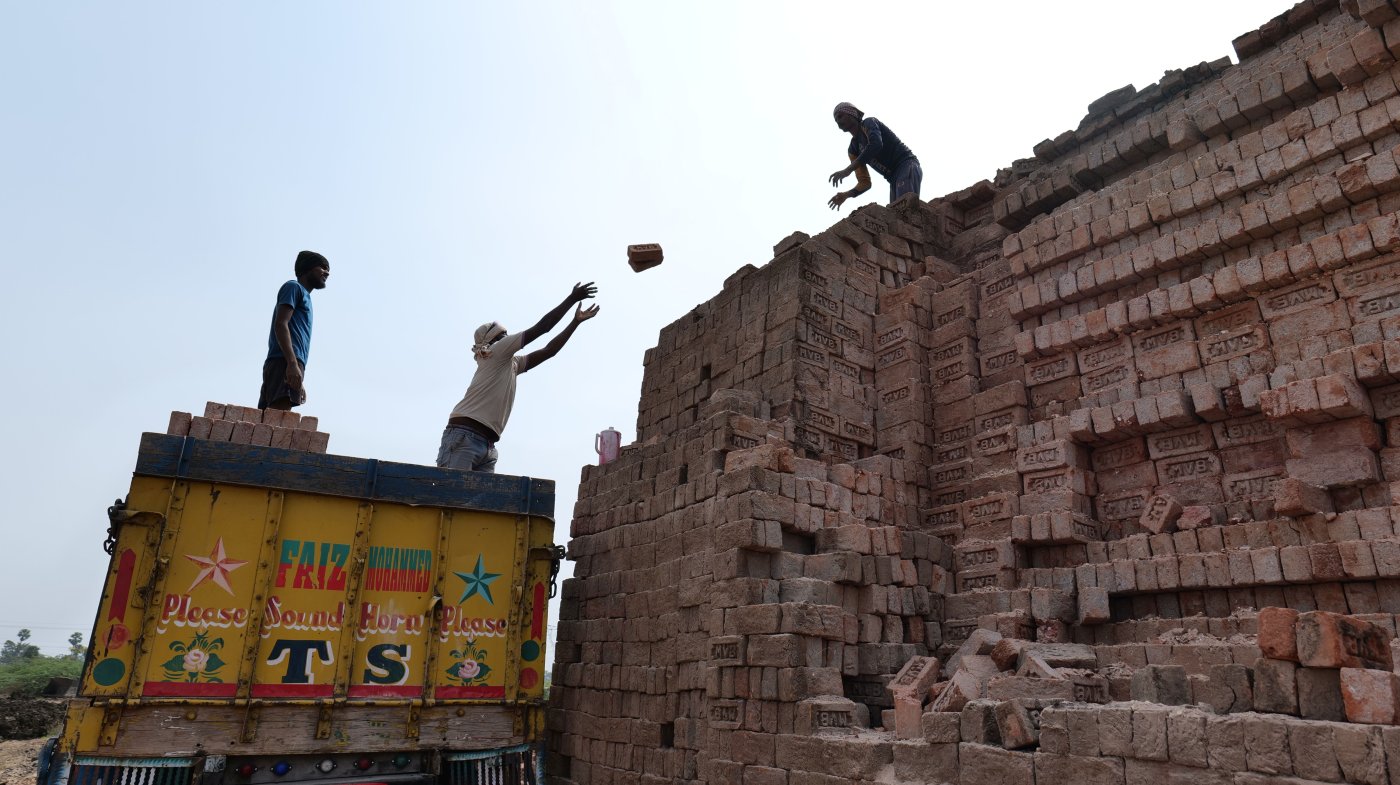Bolangir, western Odisha: “Where the hell were you? What took you so long?”
Gaurav Bhoi’s friends in Ainlabhata, a nondescript village in scenic western Odisha, confronted him at the under-construction house where they were having a get-together, the year’s final one.
It was late in the evening of 26 November 2022. The house belonged to a sardar (intermediary or agent) who supplied labourers to brick kilns in other states, and most of the 15-20 Adivasi and Dalit youngsters who had gathered including Bhoi’s younger sibling Aurav would migrate in subsequent days, through the host and other sardars.
They would mould bricks at these kilns for six months, returning to Ainlabhata only at the start of the monsoon in 2023.
“We had to finish cutting all the paddy today on our farm,” the 22-year-old Bhoi responded. Belonging to the Kandh tribal community, Bhoi started working in brick kilns in 2021.
He had volunteered to cook that evening, and his impatient friends helped light a wood fire in a corner as Bhoi readied the chicken, onion, tomato and spices for the curry.
Bhoi’s confident gait and stylish appearance seemed to compensate for his slight frame. His hair was closely cropped at the sides and back, and he wore a wristband of coloured beads, a cross-shaped earring on his left ear and a chain around his neck at all times.
Later, as Bhoi and his friends downed copious amounts of traditional wine brewed from mahua flowers, the conversation turned to what lay in store over the next few months.
All of them, without exception, dreaded the prospect of working in the kilns.
They had to work long hours, from early in the mornings till late at night, often without a day off in the week, they said. They spoke of aches and illness from the prolonged labour including in the searing hot summers. Almost all had experienced abuse, heckling and thrashing for relaxing or slowing down because of ill health. Worst of all, they could not stray out of the kiln and its immediate surroundings.
Most of the group were school dropouts. Farming around Ainlabhata was restricted to the monsoon months, and no steady employment was available at other times.
“I will not go to work in the kilns come what may,” Bhoi declared, slurring a little now.
“I will go to Mumbai or some other place, and take up any work that I find. But I will never work in a brick kiln. Ever again,” he said, to muted encouragement from the others.
One of them mentioned a fellow villager who worked in the construction industry in Mumbai; another said his cousins were security guards in Bengaluru; a third said he had a friend who was a cook in Raipur. They resolved to call these contacts so that their friend, and hopefully they too, could escape the clutches of modern slavery.
The chicken curry that night turned out too salty, and Bhoi would soon be eating his words.
Two weeks later, on 12 December, Bhoi and three of his siblings reported at the house of S*, a prominent sardar who lived in Nunhaad, a neighbouring village in Bolangir’s Belpada taluka, awaiting instructions regarding their ensuing employment at a brick kiln in Telangana.
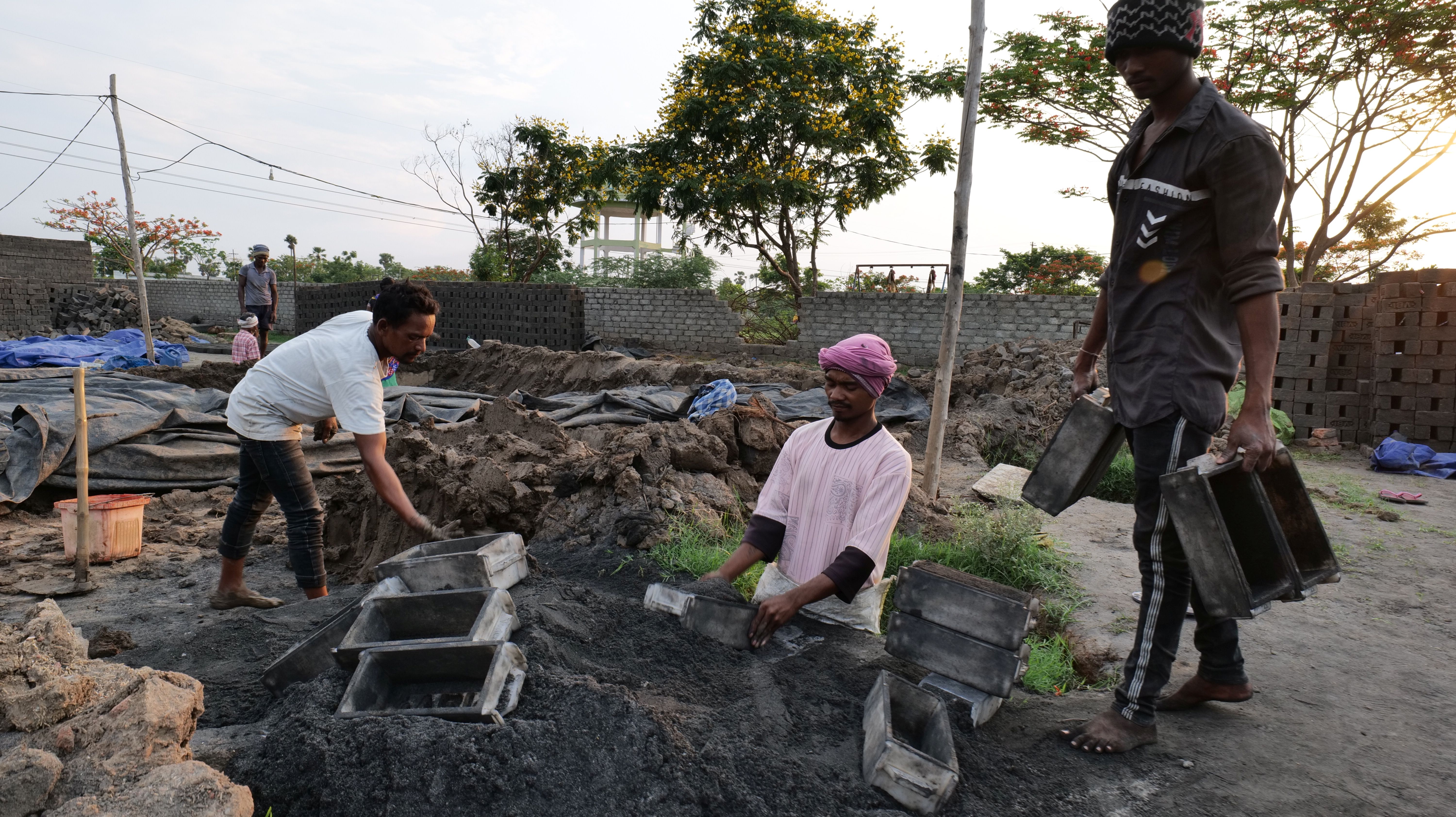
Why Modern Slavery Persists In India
A series of droughts in the 1980s propelled the first waves of distress migration from western and southwestern Odisha—the Kalahandi-Bolangir-Koraput or KBK region—to brick kilns in other states.
Within years, a well-oiled system emerged, through which sardars recruited villagers to mould or load bricks in lieu of a lump sum advance paid at the start of the lean agricultural season, usually around the time of the Nuakhai festival in mid-September. This advance was adjusted against piece-rate wages computed at the worksite, and migrants were not allowed to leave kilns till they made or loaded enough bricks to repay the amount.
India outlawed this system of employment, called debt bondage, in 1976 through the Bonded Labour System (Abolition) Act (BLSAA). Yet, as subsequent decades saw a steady rise in distress migration to brick kilns, debt bondage and bonded labour persisted.
As part of a nine-month investigation into a thriving bonded labour economy along the Odisha-Andhra Pradesh /Telangana migratory route, Article 14 travelled extensively through the KBK region between September 2022 and February 2023.
We found anecdotal evidence that the post-pandemic period witnessed larger numbers of families, predominantly belonging to Dalit and Adivasi communities, seeking to join the annual migration, even as employment available in the kilns shrank.
Despite a crackdown on traffickers, transportation of workers not registered as required by the Inter-State Migrant Workmen (Regulation of Employment and Conditions of Service) Act, 1979 continued; while rising distress and the absence of jobs in the KBK region forced many to trade their freedom for a lump sum advance payment.
Prime minister Narendra Modi, who declared in August 2022 that Indians must move past their “slavery mindset” and remove “every ounce of slavery” from their minds and habits, has also promised the empowerment of workers through a new set of labour codes that would assure “minimum wages, job security, social security, and health security”.
In reality, according to the Global Slavery Index 2023, more than 11 million Indians continue to live in modern slavery. On the other hand, research indicates that approximately 23 million workers are engaged in the brick-kiln industry alone, one among a handful known to practise debt bondage.
Conservative estimates, drawn up on the basis of interactions with migrant families, sardars, government officials and brick kiln owners, indicated that nearly 500,000 villagers from the KBK region migrated to other states every year to work in brick kilns.
In other words, nearly 500,000 people from western Odisha alone were directly affected by modern slavery, encompassing practices including forced labour, debt bondage and human trafficking.
A majority of the victims were Dalits and Adivasis, underscoring the role of the caste system in rendering people vulnerable to forced labour and trafficking. In fact, historians have argued (here and here) that the predominance of marginalised social groups in employment by brick kilns was not due to scarcity of jobs or resources or due to natural calamities, but because of centuries of structural deprivation.
Article 14 found that the BLSAA, enacted expressly to address such conditions, was rarely implemented in letter and spirit. Many government officials tasked with its implementation were unaware of the definition of bonded labour. In many districts, vigilance committees at the district and sub-divisional levels remained absent or non-functional (see here, here and here), and surveys to identify bonded labour had not been conducted in several years.
According to a September 2022 report by the International Labour Organization and UN Migration, in 2021, as many as 50 million people worldwide were living in modern slavery,10 million more than in 2016. Women and children were disproportionately vulnerable, and the Covid-19 pandemic, armed conflicts and climate change had disrupted employment and increased forced, unsafe migration, both factors heightening the risk of modern slavery.
The Asia-Pacific region accounted for more than half of the global total. The report cited multiple forms of coercion used to compel workers to work against their will, including withholding of accrued wages, threat of dismissal, forced confinement, physical and sexual violence, and deprivation of basic needs.
Deprivation To Despair: Slipping Into Slavery
The Bhois of Ainlabhata were not always susceptible to trafficking and modern slavery.
The family was related to Bhagirathi Konr, a Kandh Adivasi and village gaontia (a local title dating back to the colonial era, given to whoever bid the highest lease amount for land tax collections) who reportedly owned over 300 acres of land. This entitled the Bhois to certain privileges.
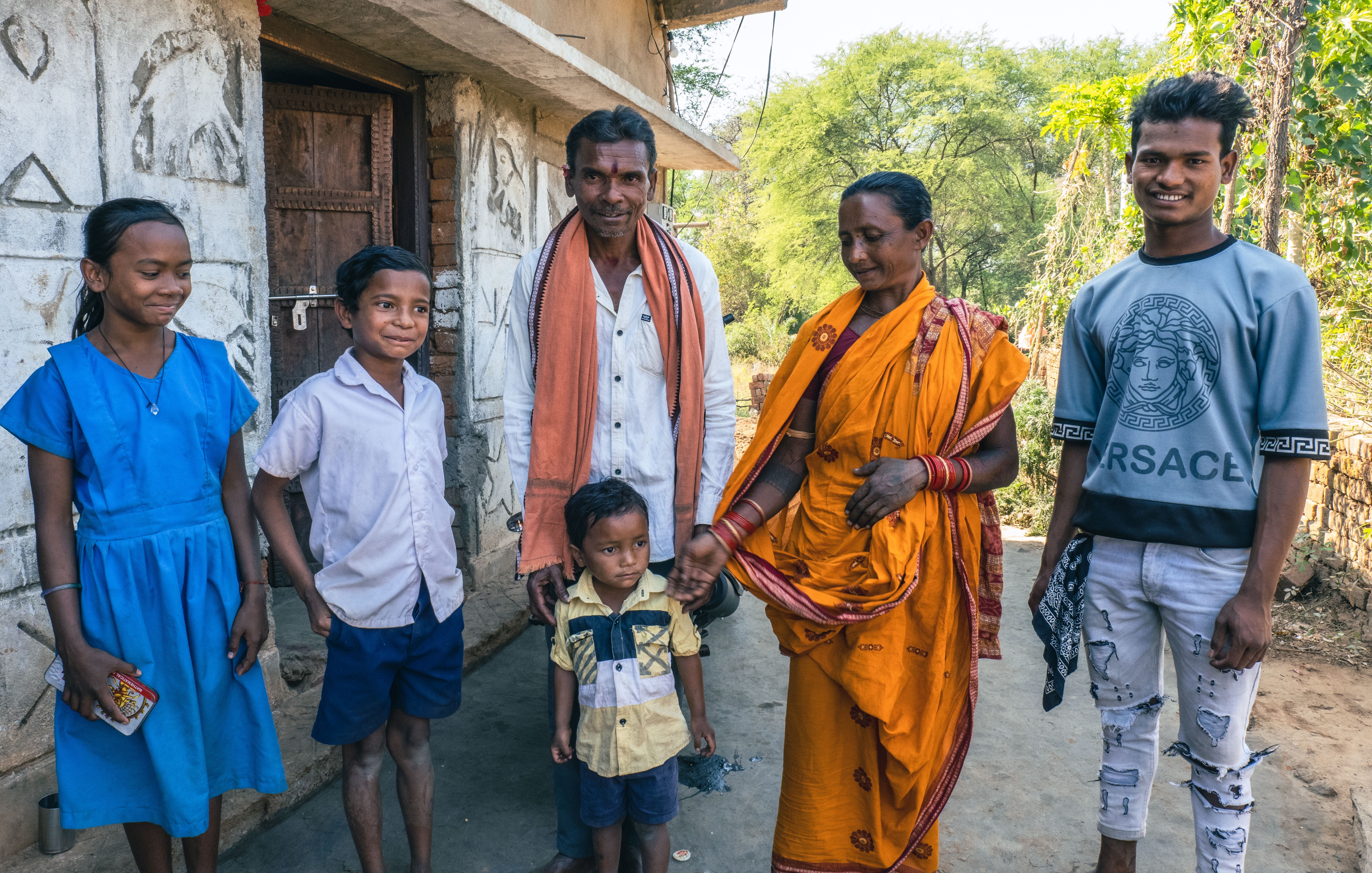
Gaurav and Aurav Bhoi’s mother Saraswati, now in her late 40s, received 20 acres of farmland in the 1980s, a wedding gift from her gaontia cousin. The Bhois started a grocery store.
The couple had 10 children, the last in 2017. For many years, the grocery store, their farm produce and their seven to eight mahua trees provided sustenance, with some assistance from intermittent wage labour under the Mahatma Gandhi National Rural Employment Guarantee Act (MGNREGA), 2005, India’s showcase workfare programme.
Around 2013, the gaontia also gave the Bhois homestead land near the village temple, where they constructed a three-room house with a tiled roof. The family was insulated from distress migration for decades.
Less privileged Kandh Adivasis of their generation, including from the same village, had a dramatically different experience.
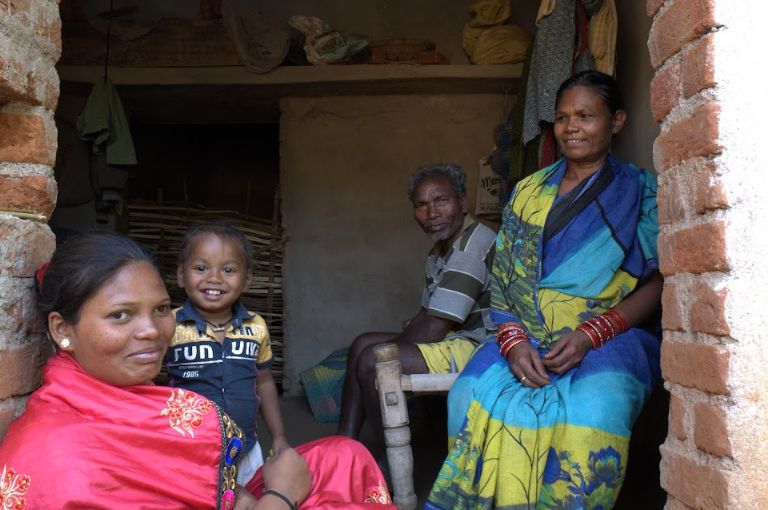
Gouri and Shiba Konr of Ainlabhata, in their late fifties and sixties respectively and owning less than two acres of farmland, began migrating to brick kilns in the early 1990s.
“Shortly after our marriage, we went to Darshan seth’s (sir’s) factory in Hyderabad,” said Gouri Konr. That was their first time.
“He used to beat us severely if we did not meet targets. We still worked there for 10 long years,” she said. “What else could we do—there was no food or work available in the village, and the children were also growing up.”
In the 1990s, every pathri or unit of brick moulders was expected to produce 4,000-5,000 unbaked bricks every week.
She and her husband worked at various brick kilns in Odisha for another 10 years thereafter; on most occasions, they were accompanied by their five children who worked alongside them.
Eventually, the Bhois did not remain unscathed.
Whenever the rains failed, they would take loans from moneylenders, at 3% to 4% per month. They also took loans for social and religious occasions, such as functions to mark the onset of puberty for their daughters.
Notably, although the family was still in possession of the roughly 20 acres given to them by the gaontia, Saranga Bhoi, Gaurav and Aurav’s father, said he owned only six acres, and was in the process of buying the rest. He did not explain further, but villagers said land was often taken away by the gaontia or moneylenders when debtors defaulted on loans.
By 2017, when Saranga and Saraswati Bhoi had their tenth child, the farmland, grocery store and the mahua trees were already overstretched.
First, the farmland could not feed 12 mouths through the year.
On average, in a normal monsoon year, a household of five in the KBK region needed 8-12 acres of land under cultivation to provide yearlong nutrition, showed a study led by historian Fanindam Deo and described in his 2009 book Roots of Poverty: A Social History.
Second, cotton cultivation had brought in some money but had also entailed new debts for seeds, fertilisers and pesticides. Without the skills to market their produce, like most other cotton farmers in the KBK region, the Bhois depended on a trader—he supplied the inputs free of cost, and they had to sell to him alone. The Bhois had little bargaining power.
Thirdly, and this was the most pressing issue, their eldest children were approaching the age of marriage, and every wedding entailed expenses of at least Rs 2 lakh - Rs 3 lakh.
That was especially true for Rosmita, their eldest daughter, who was approaching 20, past the marriageable age for girls in the region.
Months after his youngest sibling was born, Chitrasen Bhoi, now 27, became the first of the family to take up seasonal work at a brick kiln. He worked as a jalaiwala (doing firing work) at a kiln in southern Odisha, where working conditions were not as hostile as in other states. He started with a monthly pay of Rs 8,000, which rose to Rs 12,000 by the fourth year.
Meanwhile, Gaurav and Aurav Bhoi both failed their class 10 exams , were disinterested in studies and looking for steady employment.
In 2021, Chitrasen, Gaurav, Aurav and their sister Bhagyawati, who dropped out of school after class 5, made their first foray into brick kilns in other states through S, a prominent sardar from Nunhaad village.
“My father knows the sardar quite well. They are friends,” said Gaurav Bhoi. “So he arranged for us to work at a kiln in Hyderabad.”
The kiln owner was a strict and abusive taskmaster, and the Bhois were first-timers at brick moulding. But the siblings earned Rs 250,000 that season, which was used to marry off Rosmita to a boy from Nunhaad. There was also money left to sink a borewell in their farm.
The Allure Of An Advance Payment
In the late 1980s, the advance paid to villagers migrating from the KBK region was approximately Rs 500 per worker, said villagers. In the 2020s, this hovered around Rs 30,000-Rs 40,000.
This meant that a family with four workers could earn Rs 120,000 to Rs 160,000 for a season’s work in the brick kilns, and they would be paid that sum in advance, with no interest levied. It was an attractive proposition—they could repay loans to multiple moneylenders, be free of debt, and use the balance for household and consumption expenses.
Though the Bhois were forced to take up work as migrant brick moulders in 2021, they were among a miniscule proportion of workers who did not take any advances. It is likely that the Bhois’ proximity to the gaontia and the sardar helped clinch such a deal.
“Once you take an advance, you are bound to work until you have not fulfilled the target,” Chitrasen and Gaurav Bhoi told Article 14. “You can’t leave even if there is an illness or death in the family.”
Wage rates for those who took advances were also considerably lower—Rs 600 per 1,000 bricks. Those who worked without an advance were paid up to Rs 800.
In 2022, however, the dire circumstances facing the family in the post-monsoon period persisted. Their 12 acres of paddy yielded 3,750 kg of rice, which they stocked carefully for use at home. Under normal circumstances, 37 quintals of rice would last the family 24 months, but the rest of their agricultural income barely covered other essentials, and there was nothing left over for expenses on education, health, house repairs, agricultural inputs, family events, festivals or emergencies.
Their four acres of cotton yielded only 15 quintals. They sold three quintals at Rs 10,000 per quintal to the trader, for he was pressuring them to repay the input cost of Rs 40,000. For the rest of the crop, they were waiting for a better price.
Meanwhile, a girl was found for Chitrasen Bhoi to marry, and he was keen to get on with constructing new rooms in the house and sinking a borewell before he got married.
Bhuvan, Saranga and Saraswati Bhoi’s fifth child, had completed his schooling and wanted to commute to the nearest government college, 20 kilometres away. He wanted a motorbike.
“We are really keen that he finishes college and gets a job,” said Chitrasen Bhoi, explaining the circumstances that led the family to decide to migrate as brick moulders in 2022, once again.
A defiant Gaurav Bhoi came around to accepting the decision, because no other job they had access to could provide as much money.
“Suppose all four of us worked as jalaiwalas in Odisha, where the salary is Rs 12,000 and the season is five months, we’d earn only Rs 240,000,” he said.
As moulders in other states, they could make at least 400,000 bricks in a season. At the rate of Rs 800 per 1,000 bricks, that was an income of Rs 320,000.
The projected income was considerably lower than the minimum wage for four workers for six months. The work also required them to forfeit their freedom of employment and movement during the season, categorised as bonded labour under the BLSAA, 1976.
For the Bhois, these did not even count as blips.
Lax Enforcement Of The Law
The BLSAA defined bonded labour as instances where villagers entered into an agreement with a sardar or other intermediary, in lieu of advance payment, social obligation or economic consideration, to render services for a specified period, during which their freedom of movement, and employment, and their right to sell their labour or property at market value were curtailed.
The law, which abolished bonded labour on paper, made the district magistrate the implementing authority, and mandated the formation of vigilance committees at the district and sub-divisional levels that would assist the district administration in enforcing the law.
Among other things, vigilance committees were required to provide for the economic and social rehabilitation of freed bonded labour, ensure access to credit from banks, and conduct surveys to identify bonded labourers. The Central Sector Scheme for Rehabilitation of Bonded Labour, 2016 also provided funds to the tune of Rs 450,000 per district for surveys to identify bonded labour in practice.
However, like in most other parts of the country (see here, here, here), the implementation of the law has remained lax in the KBK region.
Most officials in the district administration and police whom Article 14 spoke to were unaware that the payment of lump sum advances constituted a violation of the law.
Moreover, only a few districts had functional vigilance committees, and they met rarely, said sources in the Nuapada and Bolangir district administration who requested anonymity.
They also claimed that no survey of bonded labour had been conducted in the region in recent years. Article 14 attempted to contact the chief secretary, government of Odisha, regarding the implementation of the BLSAA, but emails and calls remained unanswered.
The fate of the move to expand wage labour under the MGNREGA was similar.
In 2022, the state government increased the entitlement under the law in 20 migration-prone blocks of western Odisha to 300 days a year, instead of the 100 days’ guarantee provided by the law. The objective was to stall distress migration to brick kilns, but the implementation was severely delayed.
On 6 December 2022, when Article 14 visited the Maharapadar panchayat office in Khaprakhol block of Bolangir district, one of the 20 blocks, a meeting was underway to identify and allocate funds for various works under the scheme, such as digging and cleaning of canals, tanks and ponds.
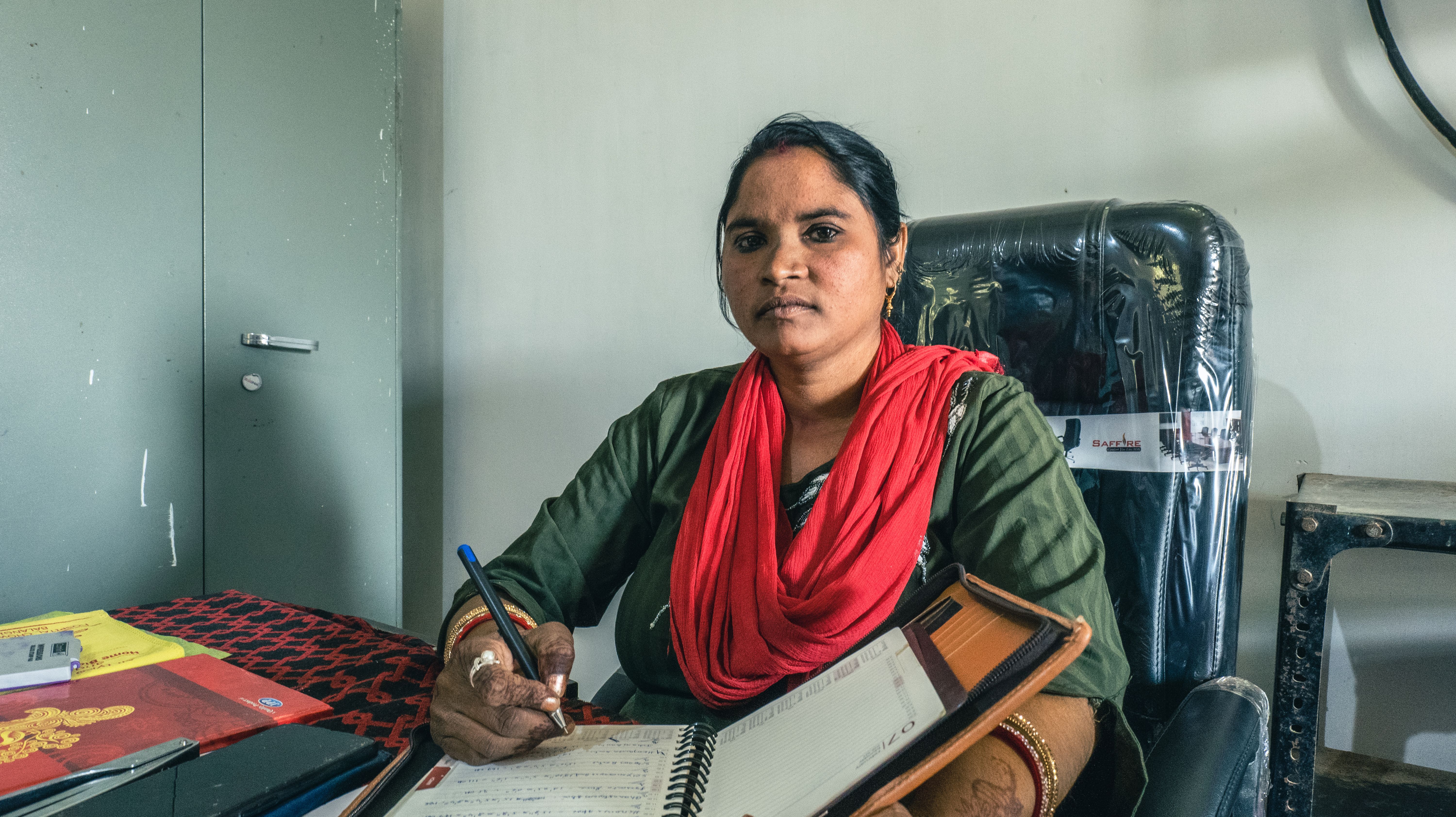
“More and more families are leaving the village, so we need to give them work,” said Sumati Pradhan, the sarpanch of Maharapadar panchayat.
On being asked why the planning had not been done in advance, she said the budget for the year had not been finalised yet.
Though MGNREGA payments are made directly into beneficiary accounts, activists and government officials told Article 14 the expanded scheme suffered from irregularities and corruption.
“Nearly 60% to 70% of the funds in the entire region are swindled by sarpanches and gram rozgar sevaks, either by overstating the number of workers or days of work,” said a panchayat member from Bolangir district, requesting anonymity. “They do this by tweaking the online database to route payments to non-beneficiaries and accomplices.”
Lakhs of workers were compelled once again in 2022 to take up work in brick kilns in other states.
A History Of Marginalisation
Odisha’s KBK region, which includes the eight districts of Kalahandi, Bolangir, Koraput, Bargarh, Nuapada, Nabarangpur, Rayagada and Malkangiri, comprises fertile plains interspersed with picturesque hills and valleys rich in biodiversity. A majority of inhabitants are Adivasis belonging to more than 50 tribal communities including the Gonds, Kandhs and Bhunjias.
Dalits comprise the second largest population group, and in some blocks, Adivasis and Dalits together constitute nearly 70% of the population.
Most Dalits and Adivasis are small and marginal farmers, landless agriculturalists or wage labourers. They live in villages and forested hamlets, mostly without all-weather access roads, high schools or hospitals. Some tribal communities such as the Binjhals and Pahariyas (classified as an Other Backward Class in Odisha) live in densely forested hill tops and valleys, largely isolated from the outside world and dependent on shifting cultivation and forest produce.
Brahmins, Muslims, Mohantys (a writer caste from coastal Odisha), Malis (a gardener caste from Nagpur) and other service castes, settled here by kings and chieftains, comprised the region’s social elite, many appointed as gaontias (rent collectors) during the colonial period. In some parts, Gond and Kandh Adivasis became gaontias, and emerged as the dominant group.
During the 19th and 20th centuries, the region also attracted Marwaris, Sindhis, Gujaratis, Punjabis and other trading communities. They settled in urban areas like Patnagarh, Khariar, Sambalpur and Kantabanji, and took control of the region’s fledgling monetised economy. These groups now own most major businesses in the region such as real estate and construction, hotels, hospitals and malls.
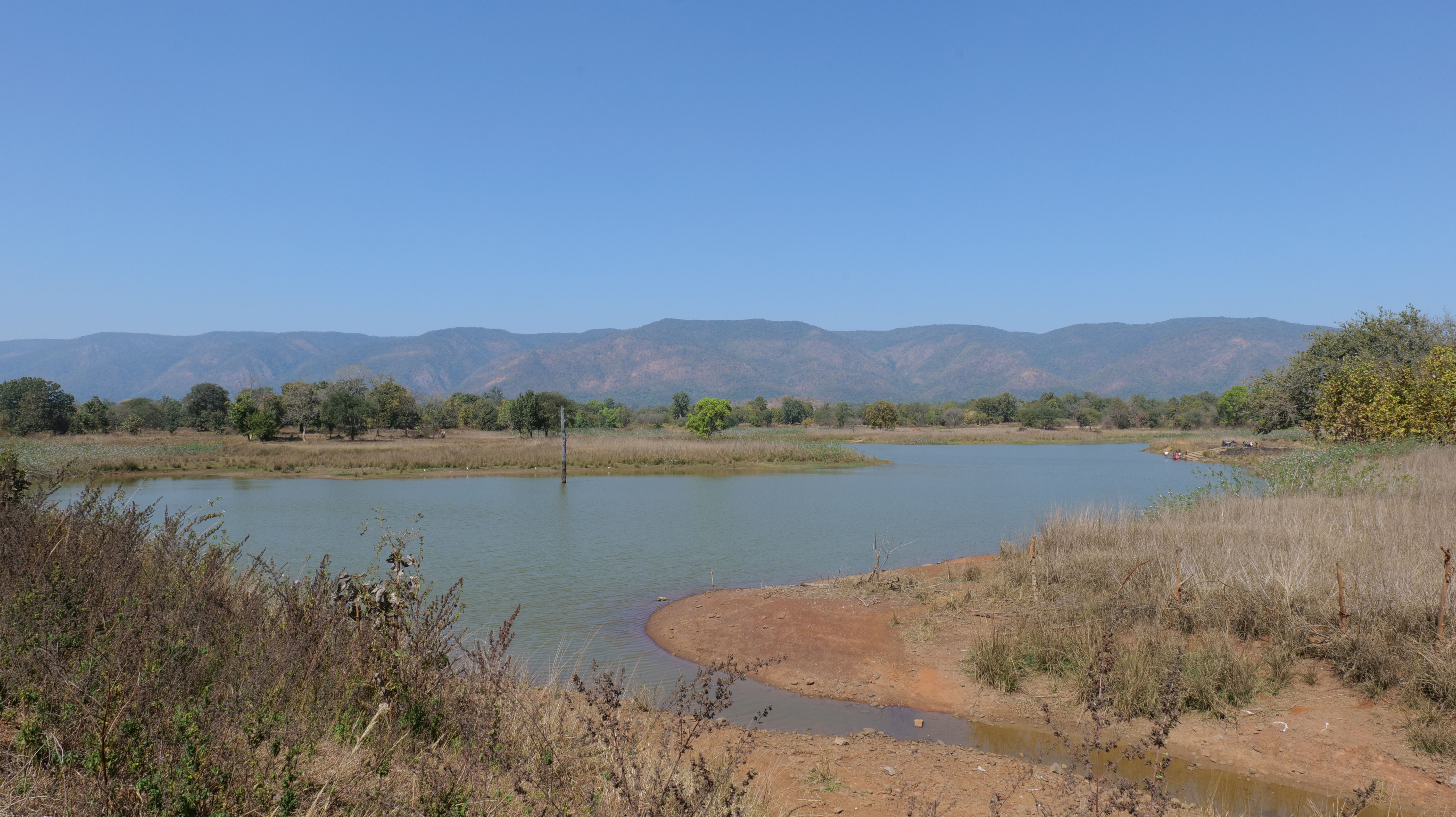
The region has no major industries or business establishments, and Bharat Aluminium Company’s move to start a bauxite mine in the Gandhamardan hills in the 1980s was stalled by sustained resistance from locals, who consider the hills a sacred site.
The banned Communist Party of India (Maoist) has a strong presence in some pockets of the region, especially in Nabarangpur, Nuapada and Bolangir that share borders with Chhattisgarh and Telangana.
The KBK region receives little rainfall compared to the state’s coastline, as it is located on the leeward side of the Eastern Ghats. Whatever rain falls is erratic, unevenly distributed, and the soil’s water retention capacity is low. These factors make the region drought-prone—locals said there is one major drought every 10 years, a minor one every two-three years.
Though droughts often leave behind a trail of death and destruction, the region hit national headlines in the 1980s, when reports emerged of villagers walking for days to cities to sell their children for a pittance.
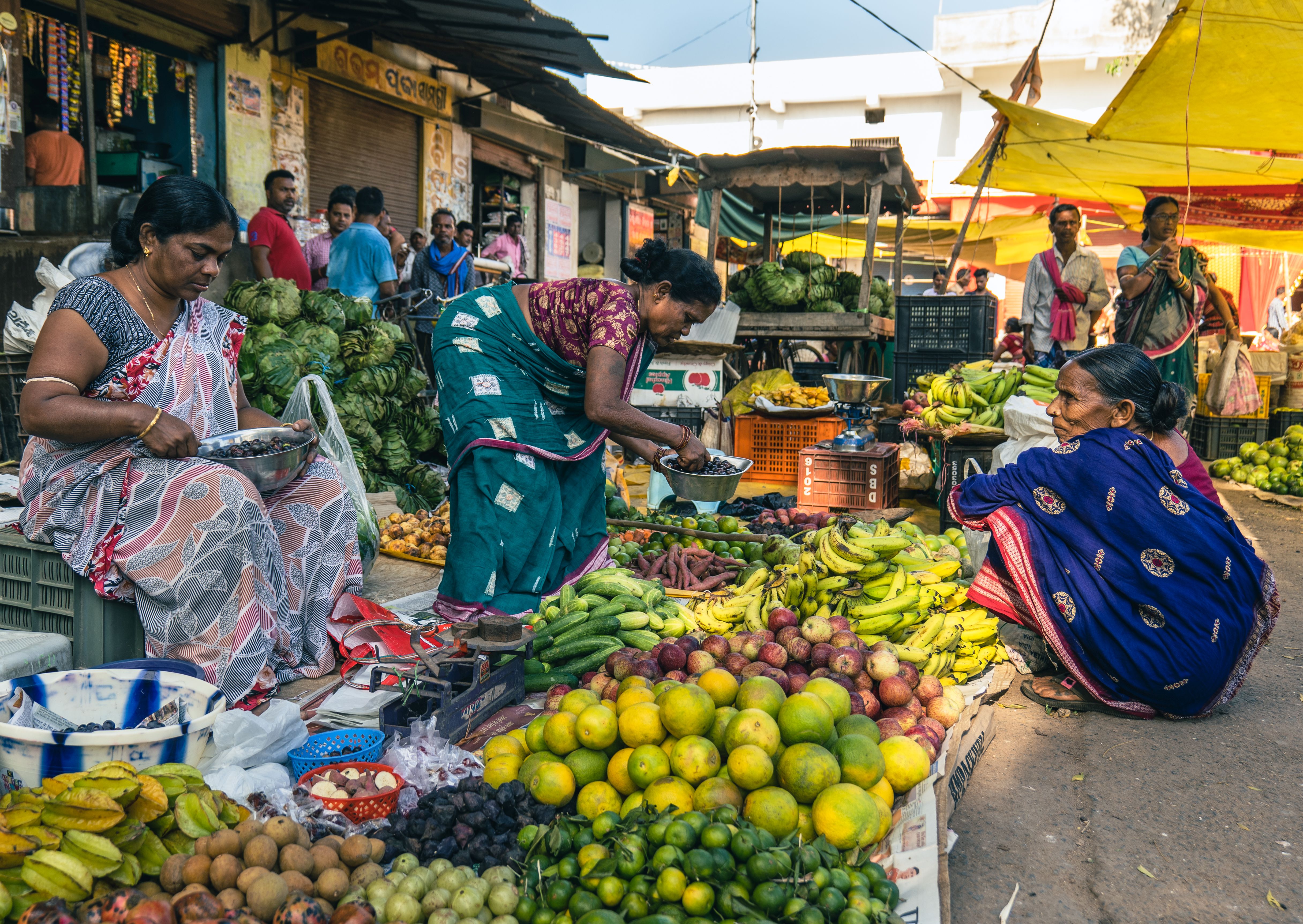
Bishnu Sharma, a Brahmin lawyer based in Kantabanji, the hub of the labour market since the 1980s, said droughts did not affect Brahmins and other dominant castes in a major way.
“Even though all our crops were destroyed during droughts, we owned several cows and buffaloes. Thus, dairy products like milk, curd and paneer were readily available at home,” said the lawyer, who grew up in a village located 10 km from Kantabanji. “Dalits had no such resources to fall back on.”
Purushottam Thakur, a Brahmin journalist and communications professional from Khariar, a town in Nuapada district, who now lives in Raipur, echoed Sharma’s opinion.
During drought years, he said, Yadavs and other service castes managed to find employment with the families of Brahmins and other upper caste landlords. Dalits, treated as untouchables including by Gond tribals, were not allowed inside these homes, and could not find any work in the villages.
Both Thakur and Sharma said Adivasis did not feature prominently among early distress migrants as they lived in forested areas and had access to minor forest produce that sustained them throughout the year. Many tribal groups also had a taboo against out-migration.
“Forest cover began depleting sharply in the 1970s, when the Indira Gandhi government initiated a food-for-timber programme for drought relief,” said Ajit Panda, a senior journalist based in Khariar. “This compelled Adivasis to join the tide of distress migrants.”
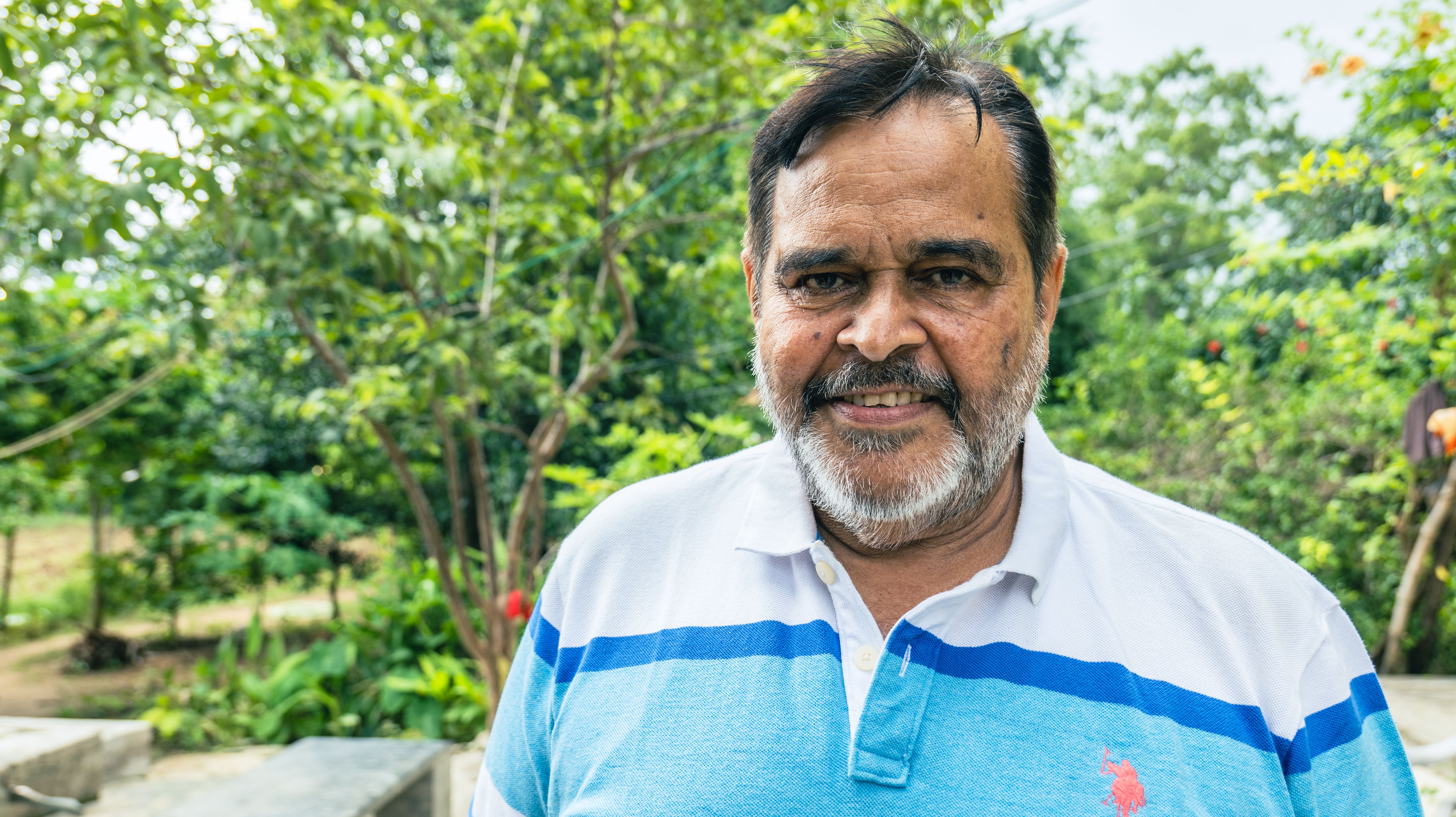
Fanindam Deo, a retired history professor based in Khariar, said that while Dalits and Adivasis were certainly vulnerable due to lack of literacy and awareness, they were in fact victims of structural deprivation stretching back centuries.
In Roots Of Poverty: A Social History, Deo noted that most kings and feudatories who ruled the region were “champions of Brahmanism” who made large land grants to temples and Brahmins, and leased out dense forests to contractors for collection of sal or teak wood.
This alienated local peasants and Adivasis from the land and forests. The colonial government then introduced land tax, largely absent in the region earlier, while traders and contractors, in collaboration with kings and bureaucrats, took control of the trade in timber and minor forest produce and made inroads into the forested areas in the region.
Thus, the poor peasants and Adivasis in the region found “their land alienated, their traditional customs threatened, themselves being marginalised by the sarkar-raja-gaontia/thekedar (State-king-tax collector-contractor) nexus,” wrote Deo, explaining why these groups revolted against the British in the 1880s, in what is popularly known as the Kandh meli.
The revolt was crushed ruthlessly by the colonial government, and its leaders hanged to death in public.
Eventually, for the brick kiln workers, the sarkar-raja-gaontia/thekedar nexus morphed into the sarkar-seth-sardar (State-kiln owner-contractor) nexus. The seths or owners were almost all Reddys and Chaudhuris—land-owning castes in Andhra who were formerly chieftains or minor royalty who historically engaged bonded labour known locally as vetti chakri, jeetam, etc, various names for debt slavery.
Readying For Another Season Of Slavery
On 8 December 2022, after the Bhois received word from the sardar, S, that they would have to leave on 12 December, they bought a Bajaj Pulsar motorbike for Bhuvan.
Chitrasen and Gaurav Bhoi, who purchased the bike from a dealer in Nunhaad, paid Rs 50,000 in cash, largely from the proceeds of their cotton sale, and agreed to pay the rest in instalments of Rs 2,000 per month for 24 months.
On 12 December, the appointed day, Chitrasen, Gaurav, Aurav and Bhagyawati Bhoi reached the sardar’s house around 7 pm. Each carried one or two bags with their clothes, personal belongings, food items such as puffed rice, and a few small utensils.
They waited there with numerous other families for instructions regarding their place of work and travel itinerary.
Eventually, around 7.30 pm, they were asked to take the late night train from Kantabanji station and head to Hyderabad, where they were to work at Rajni seth’s factory.
The journey ahead was fraught with risks, and they chose to focus on the immediate task of making their way to the destination without any trouble.
“Some families from the neighbouring village Belpada had worked at Rajni seth’s kiln last year,” Gaurav Bhoi said. “They told us they were tied up and beaten; even the women were not spared.”
The discussion moved to whether they could avoid working at that particular kiln, and if another employer might be better. Apprehensive but determined to see their decision through, the siblings set out for another season as modern slaves.
(Aritra Bhattacharya is an independent journalist and researcher based in Kolkata. Saurabh Kumar is a researcher, multimedia journalist and documentary film-maker based in Mumbai. The authors thank Sushant Panigrahy, an anti-trafficking activist from Odisha’s Bolangir district, for his help in reporting this story.)
* Name masked to protect the Bhois from potential reprisals.
This is the first of a four-part series. Here is part 2, part 3 and part 4.
Next: A Crackdown Fails To Curb Modern Slavery: India’s Bonded Labourers Endure Inhuman Conditions As Traffickers Take New Risks
Get exclusive access to new databases, expert analyses, weekly newsletters, book excerpts and new ideas on democracy, law and society in India. Subscribe to Article 14.

